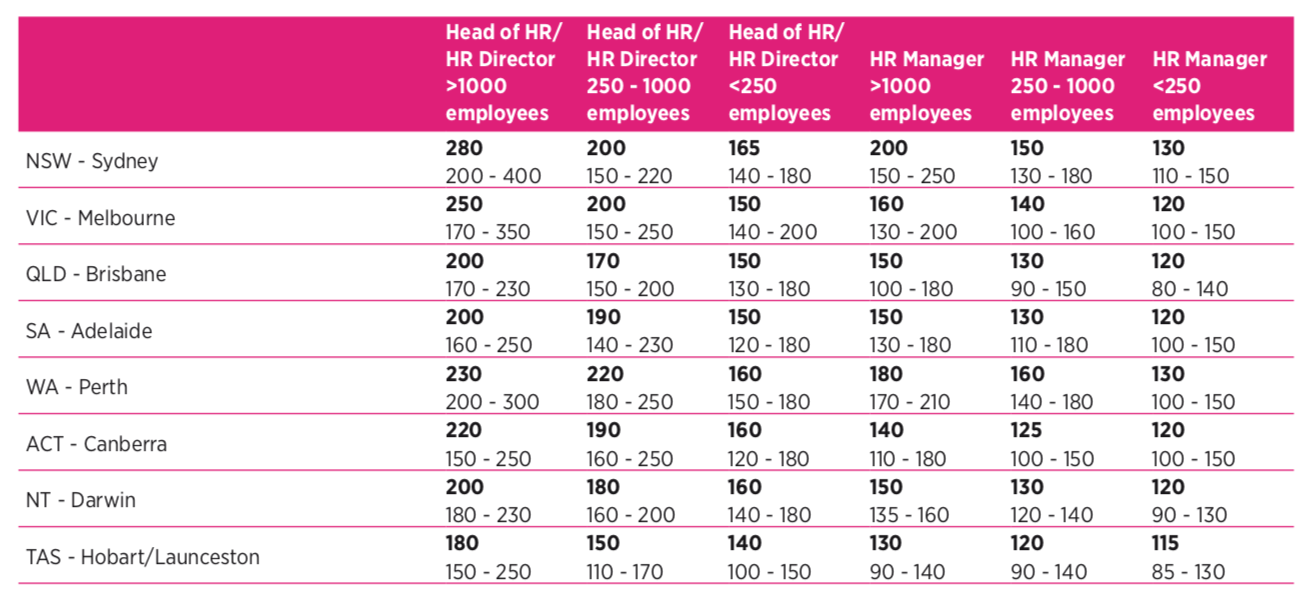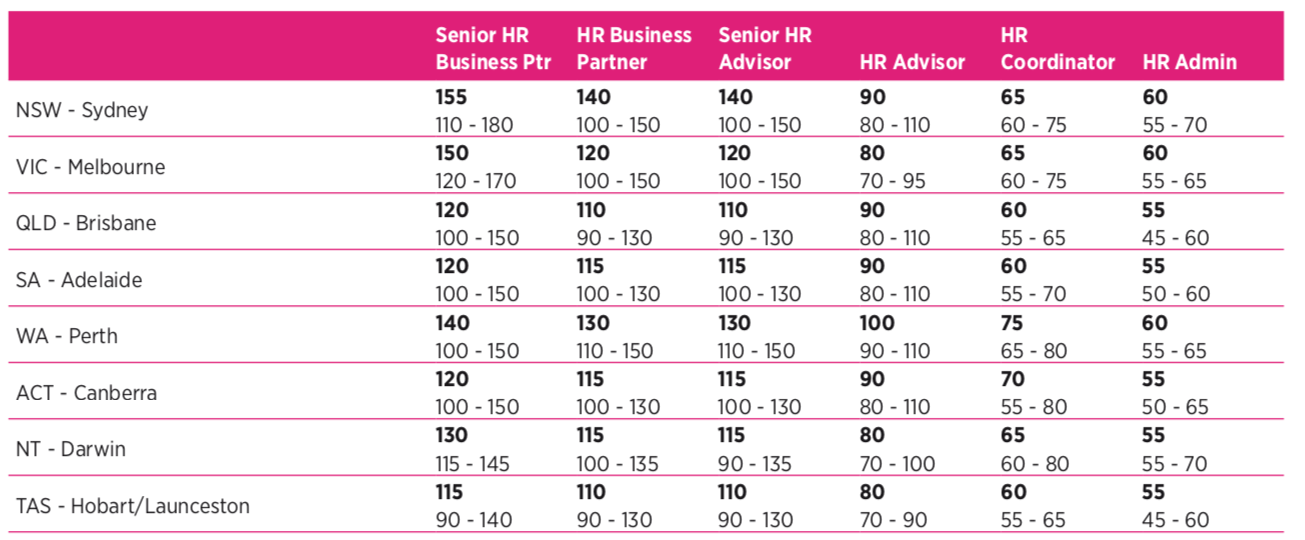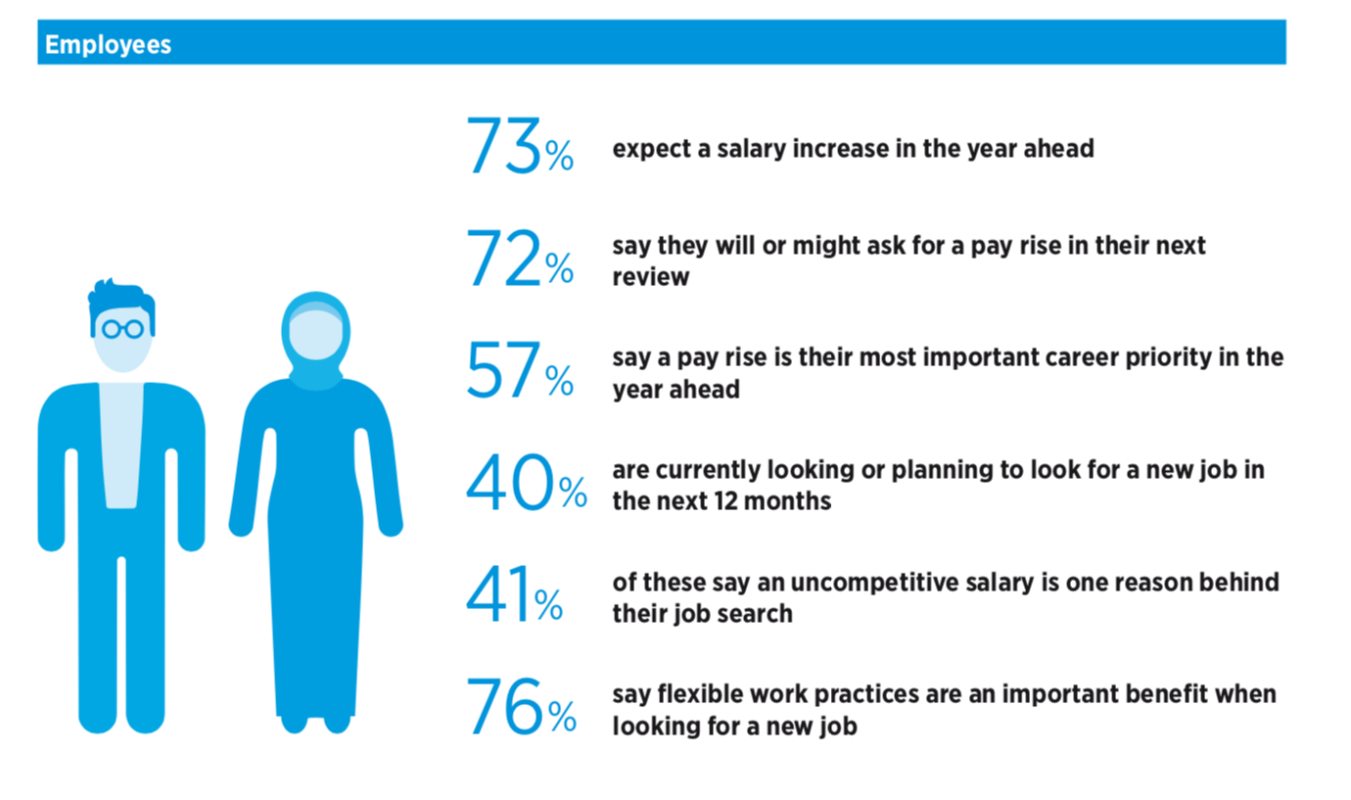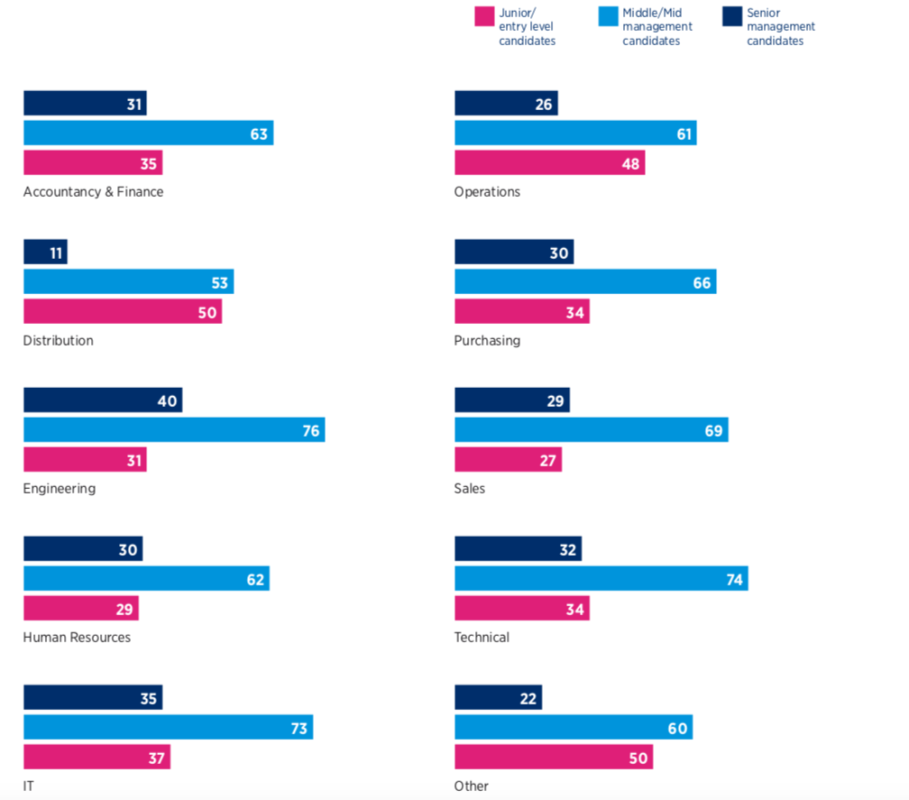HRM breaks down new data around HR remuneration – by state and seniority – and takes a look at the current state of salary bumps.
Following on from a recent article on the worrying HR trends to come from the Hays 2019/20 salary guide (sign up required), HRM zeros in on HR.
Data collected from over 3, 400 organisations (representing 4.7 million staff in Australia and New Zealand) reveals interesting insights into HR remuneration (by state and seniority), salary increases and recruitment trends.
Remuneration by seniority
When looking at the data from organisations with over 1000 employees, head of HR/HR directors in Sydney are getting paid the most, taking home an average of $280K per year (all payments are exclusive of superannuation). This is followed by Melbourne ($250K), Perth ($230K), Canberra ($220K), Darwin ($200K), Adelaide ($200K), Brisbane ($200K) and Hobart ($180K).
This number drops quite significantly for Sydney and Melbourne-based organisations with 200-1000 employees. In these organisations, those in the top HR job earn an average of $200K. Western Australian HR heads and directors take the top spot for this organisation size, averaging $220K per year. A breakdown of the most senior HR professionals’ remuneration across Australia is shown in the graph below.

On the more junior end of the workforce, HR coordinators and HR admin officers are receiving around the same salary as the average graduate, which Glassdoor places at $63,000 per year. Once again Sydney offers the most money; HR coordinators and HR admin staff in this region bring home $65K and $60K respectively. Sitting at the bottom of the list is Tasmania, where HR coordinators and HR admin staff are paid $60K and $55K – this isn’t a huge leap between the top and low end.
A breakdown of the junior to mid-range HR roles remuneration is shown in the graph below.

Remuneration by HR specialities
Taking a look at specialised roles now, the average industrial relations (IR) and employee relations (ER) manager across Australia receives between $110-180K; the highest paid ER and IR managers work in Western Australia, and the lowest paid ($130K IR and $110 ER) work in Tasmania.
Diversity managers (top: Sydney, $155K; bottom: Darwin, $105K) receive a similar annual salary to recruitment managers and talent acquisition managers (top: Perth, $145K; bottom: Darwin, $100K), and it’s a good time to work as a head of learning and development (L&D) in Sydney, as their annual salary is placed at $220K. That’s $70K more than their counterparts in Tasmania would receive.
Slow and steady might not cut it anymore
As HRM previously reported, 41 per cent of Australian employees (including HR professionals) are planning to look for a new job in the next 12 months due to less than desirable wage growth. In fact, getting paid more was the most important factor for the upcoming year for most of the 1,600 employees surveyed.
Not much has changed regarding salary bumps since we last wrote about this report in 2017. In the recent findings, 90 per cent of employers say they will increase employee salaries in upcoming pay review cycles, that’s up from 87 per cent last year. This seems like a positive step for employees, right? Maybe not. Looking a little deeper, Hays uncovered that 65 per cent of those pay increases will be by 3 per cent or less – this was the same figure presented in the 2017 report.
Just one per cent of employers are planning an increase of 10 per cent or more, and 10 per cent of employers aren’t planning on increasing employee salaries at all – that’s just one per cent less than the 2017 figure.
So more employees are primed to receive a salary increase of sorts in the upcoming year but the value of that bump might not be enough for those 41 per cent of staff who are looking for new job opportunities that offer a higher salary.

Three key recruitment trends
Deeper knowledge
Jobs in HR, both in the public and private sectors, are on a steady incline. However, employers are now looking to hire HR professionals who go beyond executing simple tasks and instead bring a more strategic and deeper expertise to the table.
Currently, there’s a demand for change managers and organisational development specialists, which Hays predicts is due to an increase in mergers and acquisitions.
Off the back of the Royal Commission into the banking and finance industry, HR business partners with experience in employee relations, redeployment and restructuring are a hot commodity, especially in finance heavy regions like New South Wales and the ACT. The aftermath of the commission has also seen an increase in the hiring of L&D specialists to deliver new Code of Practice policies set up in the wake of Hayne’s damning final report.
Permanent versus temporary staff
Taking a wider look at all industries, permanent staff positions are increasing across all departments – specifically in OHS/WHS, distribution and sales – and 47 per cent of employers expect this trend to continue over the next 12 months.
The three main skills employers are looking for in permanent hires, across all industries, are:
- problem solving (62 per cent)
- communication (58 per cent)
- critical thinking (47 per cent)
In temporary hires, problem solving and communication skills also took the top two spots, but coming in third was tech/digital skills.
Employers predict they’ll hire more temporary staff in the project management space which makes sense as these employees are often working in a transient/case-by-case environment.
Desperate to retain skilled workers
Skills shortages are still causing a headache for employers this year, with 70 per cent predicting this will impact the operation of their business, up by three per cent from last year. Employers are keen to hold onto their talent with highly desirable skills, such as middle management roles in the engineering, technical and IT industries.
Some of these employees are set to see more money in their pockets this year with three per cent of employers in engineering and two per cent in IT pledging a 10 per cent increase to salaries in an effort to retain talent in this portion of talent. In a bid to replenish skill shortages, 57 per cent would consider employing or sponsoring an overseas candidate.

Getting the right hires on board and retaining your best performers is imperative for any business. AHRI’s short course ‘Attracting and retaining talent’ will get you up-to-date on the latest best practice around staff selection, social media and more.


There has been extensive comment in the media about the issue of slow wages growth with figures of 2.5% to 3.0% being typically quoted numbers. I haven’t seen any actual quotes of what is actually considered to be a suitable number. Typically over the last 25 years the salary increase levels have tended to be a figure that is 1% to 1.5% above the headline inflation rate and the current situation is not inconsistent with this history. In organisations with a structured salary review system, they would typically us a budget figure e.g. 3% and distribute that money on the… Read more »